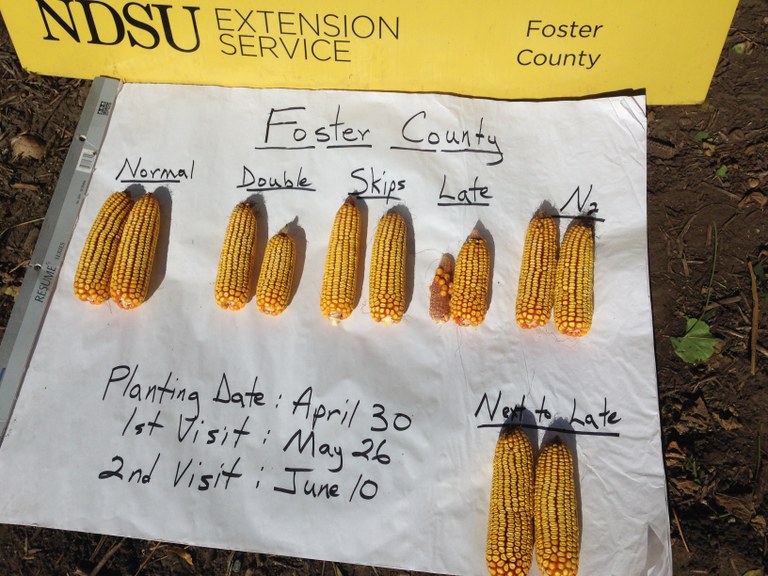Impact of Plant Establishment on Corn Production in Eddy, Foster and Wells Counties, 2013-15
North Dakota State University conducted a statewide study in 2013-14, and continued in 2015 in a three-county area, to evaluate the impact of corn plant establishment on grain yield and quality. The study’s main objective was to measure the yield response of late-emerging plants, plant doubles and plant skips compared to normally emerged and evenly spaced plants. This report will summarize highlights of the study conducted in Eddy, Foster and Wells counties using data from 10 commercial fields.

Three plots (replications) were located within each field and consisted of 12 or 16 rows with a length of 30 feet. Plant populations were measured at emergence and about 7 and/or 14 days after the initial emergence date. Plants emerging after general field emergence time were identified, as well as plant skips (plants with distance greater than 12 inches of one another within row) and plant doubles (plants within 2 inches of one another). At maturity, corn ears were hand harvested and grain mechanically threshed to determine seed yield, moisture and test weight.
Results
The table summarizes harvest data during 2013-15 among the 10 corn fields. Each field contained plants that emerged at least one week after general plant emergence.
- Ear weight of these late-emerging plants was 7 to 100% less and averaged 49% less compared to ear weight of timely emerged plants.
- Ear weight from plant skips ranged from 13% greater to 11% less, and averaged 1% less than uniformly spaced plants.
- Plant doubles had ear weight 3 to 56% less and averaged 19% less than ear weight of uniformly spaced plants.
Takeaway
The study confirms that using corn planting techniques that provide timely field plant emergence is important to optimizing grain yield and quality. Uniform plant spacing within rows also aids in maintaining yield potential but variability of plant spacing has less negative impact compared to late-emerging plants.
Greg Endres
Extension Area Agronomist
Other team members include: Tim Becker, Joel Lemer, Lindsay Maddock and Lindsey Novak


